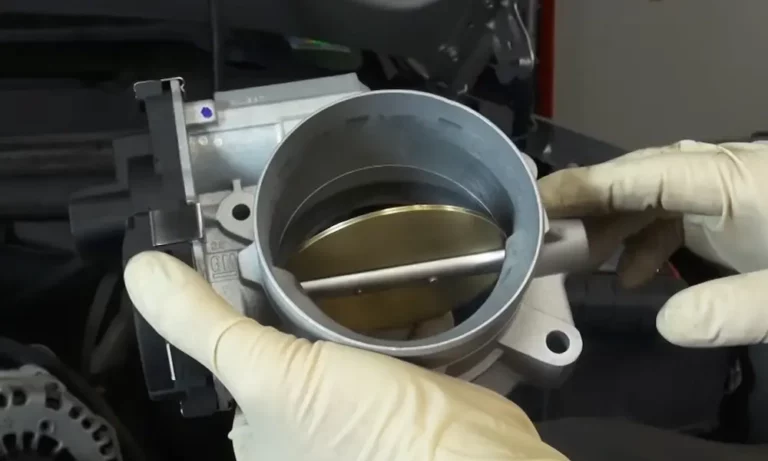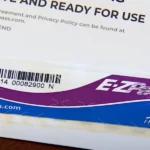You’ve just replaced your battery or cleaned your throttle body, and suddenly your car is idling like it’s had too much caffeine. Don’t panic – your vehicle likely just needs to relearn its idle speed. This essential maintenance task is often overlooked but can save you from unnecessary trips to the mechanic.
What Is an Idle Speed Relearn Procedure?
An idle speed relearn procedure is a process that allows your vehicle’s computer (the Powertrain Control Module or PCM) to reestablish the ideal idle parameters. Think of it as your car’s brain needing to recalibrate after you’ve reset or changed something significant.
Your vehicle’s computer constantly makes micro-adjustments to maintain smooth engine operation. It records these as fuel trim values to ensure your engine runs efficiently. When you disconnect the battery or perform certain maintenance tasks, these learned settings get wiped out – just like unplugging your home router resets your internet settings.
Why Your Car Needs an Idle Speed Relearn
Your car might need an idle relearn procedure if you’ve:
- Disconnected or replaced the battery
- Cleaned or replaced the throttle body
- Swapped out engine sensors
- Had the PCM reflashed or reprogrammed
- Noticed your car idling unusually high or rough after maintenance
If you’ve done any of these things and your car is now idling at 2,000 RPM when it should be purring at 750 RPM, your vehicle is simply confused about where “normal” is.
Signs Your Car Needs an Idle Relearn
How do you know if your vehicle needs this procedure? Watch for these symptoms:
- Abnormally high idle speed (over 1,000 RPM when it should be around 600-800)
- Fluctuating idle that can’t seem to settle
- Stalling when coming to a stop
- Rough idling that feels like the car is shaking
- Check engine light related to idle control issues
I recently cleaned my Toyota’s throttle body and afterward, the engine revved up to 3,000 RPM at idle – scary stuff until I performed the proper relearn procedure!
Manufacturer-Specific Idle Relearn Procedures
Different manufacturers have developed unique idle relearn procedures that cater to their specific engine management systems. Here’s how they compare:
Toyota and Lexus Idle Relearn
Toyota and Lexus vehicles follow a straightforward but precise sequence:
- Start the engine and warm it up completely
- Turn the engine off
- Turn the key to ON position (without starting) and then OFF – repeat twice
- Turn off all accessories (A/C, radio, lights)
- Start the engine
- Put the transmission in Drive (for automatics) with parking brake engaged
- Let the car idle for 4-5 minutes while the computer relearns
For a more comprehensive approach, Toyota’s documentation recommends also:
- Scanning and clearing fault codes first
- Completing a driving cycle if idle issues persist
Ford Idle Relearn
Ford vehicles require a progressive approach that incorporates different load conditions:
- Set parking brake with the vehicle stopped
- Put transmission in Park, turn off all accessories
- Run the engine until it reaches normal operating temperature
- Let engine idle for at least one minute
- Turn on air conditioning and idle for another minute
- With foot on brake, shift to Drive with A/C still on
- Allow engine to idle for at least one minute in this configuration
- Complete by driving normally for the first 30 miles
This gradually exposes the computer to different operating conditions, helping it build a comprehensive profile of how your engine should run in various scenarios.
Nissan’s Idle Air Volume Relearn (IAVL)
Nissan vehicles use a unique “Idle Air Volume Relearn” (IAVL) procedure that’s quite different from other manufacturers. Some Nissan models even require disconnecting the Throttle Position Sensor while the engine is running – a task best left to professionals.
The procedure is especially important after throttle body cleaning, particularly when experiencing erratic idle between 1500-2000 RPM. For successful completion, the engine must be idling below 650 RPM; otherwise, the relearn won’t function properly.
General Motors Vehicles
GM vehicles often require a specific sequence of events:
- Start the engine and let it reach operating temperature
- Turn the A/C and headlights off
- Put the transmission in drive (automatics) with your foot on the brake
- Hold the engine at 1000 RPM for 3 minutes
- Return to idle position and allow to idle for 5 minutes
- Turn engine off for at least 10 seconds
- Restart and check for proper idle operation
Different GM models may have variations on this procedure, so it’s worth checking your specific model’s requirements.
Step-by-Step Idle Relearn Procedure for Common Vehicles
If you don’t have manufacturer-specific instructions, here’s a general idle relearn procedure that works for many vehicles:
- Make sure the engine is completely warm
- Turn off all accessories (A/C, radio, lights)
- Set the parking brake and ensure the transmission is in Park
- Allow the engine to idle for 5-10 minutes
- Turn the engine off for at least 10 seconds
- Restart and check if idle has normalized
- If not, take the vehicle for a 15-20 minute drive with varied speeds
This basic approach allows the computer to gather data across different conditions and establish new baseline values.
DIY vs. Professional Relearn: What’s Right for You?
When deciding whether to perform an idle relearn yourself or seek professional help, consider these factors:
When to DIY:
- You have basic mechanical knowledge
- Your vehicle has a simple relearn procedure
- You have access to the correct procedure for your specific make and model
- The issue is clearly related to a recent battery disconnect or throttle cleaning
When to Seek Professional Help:
- Your vehicle requires special diagnostic equipment
- The relearn procedure involves accessing the PCM or other computer systems
- DIY attempts haven’t resolved the issue
- You’ve tried multiple procedures without success
The cost of professional service typically ranges from $50-150 depending on your vehicle and location. However, many shops will perform an idle relearn procedure for free if you’ve had other service work done.
Troubleshooting Idle Relearn Issues
If standard relearn procedures aren’t working, try these troubleshooting steps:
Try the Extended Driving Method
Some vehicles respond better to extended driving with varied conditions. One effective approach is:
- Drive with cruise control at a fixed speed (around about 60 mph) for 10 minutes
- Reduce speed to 55 mph for another 10 minutes
- Further reduce to 50 mph for 10 more minutes
- Include several complete stops and starts during your drive
This progressive approach gives the computer time to gather data at different speeds and conditions.
Check for Additional Issues
If relearn procedures aren’t working, other problems might be at play:
- Dirty MAF (Mass Air Flow) sensor
- Vacuum leaks
- Faulty idle air control valve
- EGR valve issues
- Clogged fuel injectors
A quick inspection of these components might reveal the true culprit behind your idle issues.
Reset Everything as a Last Resort
As a last resort, you can try resetting all vehicle computers:
- Disconnect both battery terminals
- Touch the disconnected terminals together (away from the battery) for 30 seconds
- Reconnect the battery
This will clear all learned values from every computer in your vehicle. Be prepared to reset your radio, clock, seat memory, and other personalized settings afterward.
Electronic Throttle Bodies: Special Considerations
Modern vehicles with electronic throttle control (drive-by-wire) require special attention. These systems learn the throttle plate stop positions when the battery is connected. If the throttle plate is at an angle during battery reconnection, idle problems can occur.
Important tips for drive-by-wire systems:
- Ensure the accelerator pedal is fully released when reconnecting the battery
- Don’t disturb the vehicle during battery reconnection
- Never clean the throttle body while it’s still connected to the vehicle
- If idle remains extremely high (3,000+ RPM) after cleaning, professional PCM reflashing may be necessary
Maintenance Tips to Avoid Idle Issues
Prevention is always better than cure. Here are some maintenance tips to minimize idle issues:
- Use a memory saver when disconnecting the battery
- Clean the throttle body according to manufacturer recommendations
- Replace the air filter regularly
- Use quality fuel and fuel system cleaners
- Address check engine lights promptly
- Perform regular tune-ups according to your maintenance schedule
These practices can help maintain proper idle characteristics and reduce the need for relearn procedures.
How Idle Relearn Affects Vehicle Performance and Fuel Economy
An improperly calibrated idle can significantly impact your vehicle’s performance and fuel economy:
| Aspect | With Proper Idle | With Poor Idle Calibration |
|---|---|---|
| Fuel Economy | Optimal MPG | Up to 10-15% reduction |
| Engine Wear | Normal | Increased stress on components |
| Emissions | Within standards | Potentially higher emissions |
| Drivability | Smooth transitions | Hesitation, stalling |
| Cold Starts | Quick, consistent | Rough, unstable |
A properly calibrated idle ensures your engine runs efficiently, reduces unnecessary fuel consumption, and helps your vehicle pass emissions tests if required in your area.
Common Misconceptions About Idle Relearn Procedures
Let’s clear up some common misconceptions:
- Myth: You need expensive diagnostic equipment for all relearn procedures.
Fact: Many vehicles can complete relearns with simple driving or idling. - Myth: Disconnecting the battery always requires a relearn procedure.
Fact: Some newer vehicles retain their learned values in non-volatile memory. - Myth: Relearn procedures always work instantly.
Fact: Many vehicles require driving cycles over several days to fully adapt. - Myth: High idle after battery disconnect always indicates a serious problem.
Fact: It’s often just the computer needing to reestablish baseline values. - Myth: Any mechanic can perform a proper idle relearn.
Fact: Manufacturer-specific knowledge and procedures are often required for success.



